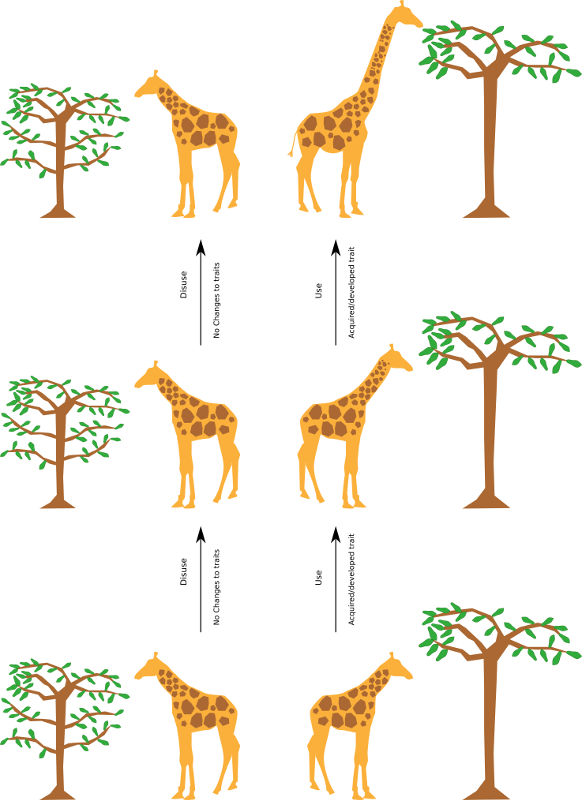The French biologist, Jean Baptiste-Lamarck, discussed the occurrence of different organisms with two forces governing evolution: adaptive and complexifying forces. The complexifying force drives body plans towards the higher taxa while the adaptive force caused organisms to adapt to their circumstances. These discussions in the early 1800s involved two major ideas: use/disuse and inheritance of acquired traits.

Example of giraffes evolution
His idea of use versus disuse is exemplified by the case of giraffes. It was thought that giraffes descended from an antelope. As giraffes would reach higher towards trees to acquire leaves, they would stretch their necks through successive generations and inherit gradually longer necks

Weismann’s experiment falsified this hypothesis
At the end of the 19th century, the evolutionary biologist, August Weismann tested the ideas of use/disuse and acquired inheritance of traits. Weismann took 68 mice and cut their tails off. After mutilation, the mice were permitted to breed. He repeated the amputation of tails and breeding for 5 generations. If the unused tails were acquired as a trait, then one would think that the tail length over multiple generations would progressively shrink. Weismann found that no shortening of tails occurred, thereby excluding Lamarck’s tenets of inheritance of acquired traits from use or disuse.
Lamarck’s tenets of inheritance was not supported.



